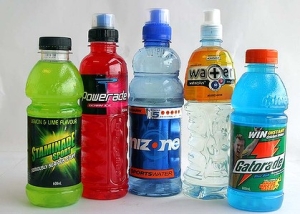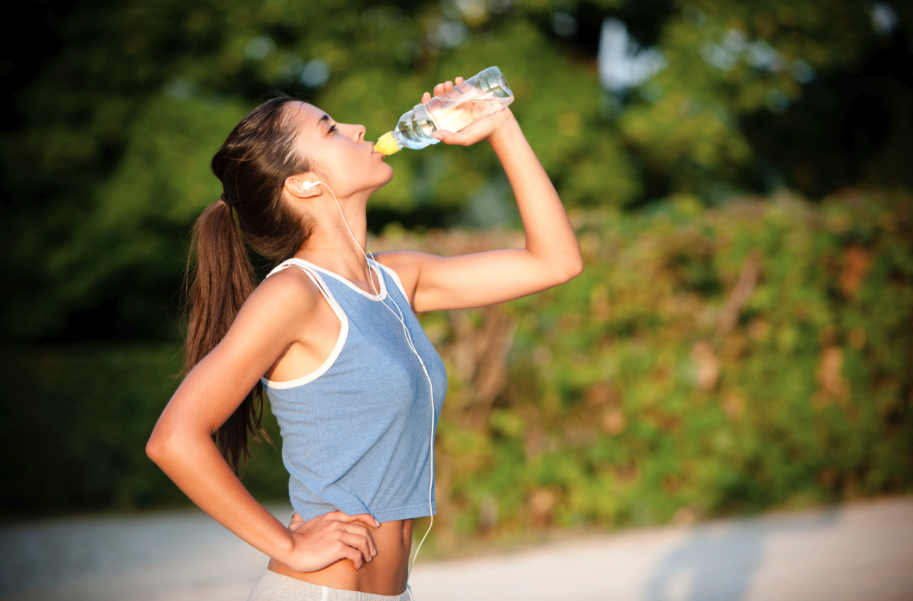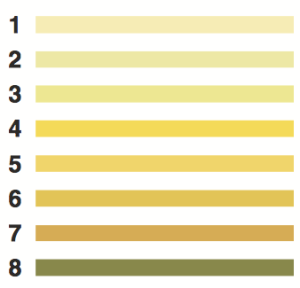Guidelines for fluid intake should be individualised as each athlete has a different sweat rate. However, general guidelines and principles can still be used to help determine an individuals drinking before, during and after performance.
Guidelines for fluid intake before performance
Before performance, the athlete needs to ensure that they are properly hydrated. General recommendations of consuming 2L a day of water for the average person, is a good beginning for fluid intake. However, factors such as time since last training/performance can affect athlete hydration and electrolyte levels. An athlete can check their hydration statue using a urine colour test. The darker the colour of the urine, the more dehydrated.
In addition to this the American College of Sports Medicine recommends:
- 480-600 mL (~500mL) of water or sports drink at least 4 hours before exercise
- 240-360 mL (~300mL) more 10-15 minutes prior to performance, and
- Small amounts of salt may also be beneficial for reducing fluid loss.[1]
Guidelines for fluid intake during performance
The greatest variation in advice comes during performance, as each athlete will not only sweat at different rates, but will only be able to consume certain amounts of fluid as they perform without discomfort. Other variables include the heat during performance, performance duration, the intensity of the performance and opportunities for the athlete to drink.
An athlete’s rate of sweat can be found by weighing the athlete before and after exercise, while measuring the fluid consumed. The sweat rate is the loss of weight in Kg plus the amount of liquid consumed in L divided by the time of exercise in hours. This provides a sweat rate in litres per hour. Many athletes sweat between 1 and 2 L/h.
The goal of fluid intake during exercise is to prevent excessive dehydration, which is less than 2%. Just 2% dehydration negatively affects performance. If it is expected that the athlete will become excessively dehydrated then regular consumption of fluid is advised.
It is important that hydration rates match sweat rates as closely as possible, especially for events of long duration. This is because slight mismatches can lead to dehydration or hyponatraemia. Hyponatraemia occurs when blood sodium levels are diluted. It decreases performance, and causes nausea, vomiting, headaches, and swelling. Sports drinks can help prevent hyponatraemia, which generally only occurs in long duration sports such as marathons, and triathlons.
General guidelines for fluid consumption during exercise are:
- 90-240 mL (~150 mL) of water every 15-20 min if exercise is less than 60 min.
- 90-240 mL (~150 mL) of sports drink every 15-20 min if exercise is more than 60 min.
- DO NOT consume more than 1 L per hour of exercise. [1]
Guidelines for fluid intake after performance
It is vital that an athlete replaces the fluid lost during performance after it is completed. An athlete should weight themselves post-performance and check their urine to help determine how much fluid needs to be consumed. It is important for the athlete to avoid over hydration leading to hyponatraemia. If symptoms begin, the athlete should limit fluid intake and increase salt consumption. A medical practitioner should also be consulted.
General guidelines for fluid intake after performance are:
- Fluid lost should be replaced within 2 hours after exercise
- 1.3-1.6 L (~1.5 L) of fluid should be consumed for every Kg of weight lost
- DO NOT consume more than 1 L per hour of exercise. [1]
Following these fluid intake guidelines is a strategy an athlete can employ to support evaporation as one of the body’s temperature regulation mechanisms.
Further Reading on fluid intake guidelines
American College of Sports Medicine (2007). “Exercise and Fluid Replacement.” Medicine & Science in Sports & Exercise 39:2 pp377-390. available here.
AIS Sports Nutrition (2009). Fluid – Who Needs It? available here.
[1] Michael R. Simpson, D.O., M.S., and Tom Howard M.D. (2011) Selecting and effectively using hydration for fitness. Accessed at https://www.acsm.org/docs/brochures/selecting-and-effectively-using-hydration-for-fitness.pdf on 23 December 2015.


